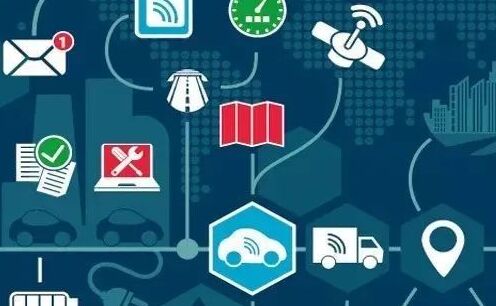The logistics industry is an important part of the modern economy, which is responsible for transporting raw materials, semi-finished products and finished products from the place of production to the place of consumption, and guaranteeing the timely supply of goods. With the rapid development of global trade and the rise of e-commerce, the logistics industry is facing increasingly complex demands and challenges. In order to improve logistics efficiency, reduce costs and enhance customer satisfaction, logistics technology has developed rapidly in recent years.
Modern logistics technologies cover a wide range of areas from the Internet of Things (IoT), automated warehousing systems, and drone delivery to blockchain, big data, and artificial intelligence. These technologies not only help companies optimize supply chain management, but also drive digital transformation and innovation in the entire logistics industry. Through real-time tracking, intelligent management and data analytics, logistics technology is changing the traditional logistics operation model, bringing unprecedented efficiency and flexibility.

I. Application of Internet of Things (IoT) in logistics
Real-time tracking and monitoring
- Cargo Location Tracking
Internet of Things (IoT) technology enables logistics companies to track the location of goods in real time. By installing GPS devices and RFID tags on cargo or transportation vehicles, companies can obtain the exact location of their goods at any given time. This not only improves the transparency of cargo transportation, but also helps logistics managers respond to potential delays or deviations in a timely manner, optimize transportation routes, and ensure that cargo arrives at its destination on time. In addition, customers can also track the location of their goods in real time via mobile apps or web pages, enhancing customer experience and satisfaction.
Intelligent Warehouse Management
- Inventory real-time monitoring and management
The application of IoT technology in warehouse management can realize real-time monitoring of inventory. By installing sensors and cameras in the warehouse, the management system can collect and analyze inventory data in real time and accurately record the location, quantity and status of each piece of goods. This real-time monitoring not only improves the accuracy of inventory management, but also finds and solves problems in inventory management in a timely manner, avoiding inventory backlog or shortage.
- Automatic replenishment system
Intelligent warehouse management system based on IoT can realize automatic replenishment. When the system monitors that the inventory of a certain kind of goods is lower than the set safety stock level, it will automatically generate a replenishment order and notify the supplier to ship the goods. This automatic replenishment system not only improves replenishment efficiency, but also effectively avoids sales loss due to insufficient inventory. At the same time, combined with big data analysis, the system can also optimize replenishment strategies and improve inventory turnover based on historical sales data and market trends.
Fleet Management
- Real-time Vehicle Monitoring
The application of IoT technology in fleet management can realize real-time monitoring of transportation vehicles. Through the GPS devices and various sensors installed on the vehicles, the management system can obtain real-time data on the vehicles’ location, speed, driving routes, fuel consumption and so on. These data not only help fleet managers to understand the real-time operating conditions of vehicles, but also optimize transport routes, reduce fuel consumption and driving time, and improve transport efficiency.
- Vehicle Maintenance Prediction and Scheduling Optimization
Vehicle maintenance prediction system based on IoT technology predicts the maintenance needs of vehicles by monitoring their operating data and health status in real time. For example, sensors can monitor the temperature of the engine, the state of the brake system, etc. When an abnormality is detected, the system automatically generates a maintenance reminder and arranges for the vehicle to be overhauled, avoiding transportation delays due to vehicle failure. At the same time, combined with big data analysis and artificial intelligence algorithms, the system can also optimize vehicle scheduling, rationally arrange vehicle use and maintenance, and maximize fleet operational efficiency.
II. Automated Warehousing Systems
Automation equipment
Automated Stereo Warehouse (AS/RS) and Robotic Sorting System is the core equipment of automated warehousing system. Automated Stereo Warehouse realizes high-density storage and fast access through elevated storage shelves and automated access equipment; Robot Sorting System realizes efficient and accurate goods sorting through robotic arms and conveyor belts.
Technical Advantages
Automated warehousing systems have significant advantages in improving warehousing efficiency, lowering labor costs and reducing error rates. Through automated equipment, companies can significantly improve warehouse storage and operational efficiency, while reducing reliance on human labor and lowering the risk of operational errors.
Practical application examples
The automated warehouse systems of Amazon and Alibaba are typical application cases. Amazon’s robotic warehouse realizes efficient order processing and goods sorting through a large number of robots; Alibaba’s Cainiao network realizes a comprehensive improvement of logistics efficiency through intelligent warehousing systems.

III.Logistics Optimization Driven by Big Data and Artificial Intelligence
Data analysis and prediction
The application of big data and artificial intelligence in logistics is mainly reflected in data analysis and prediction. Through the analysis of logistics data, enterprises can predict changes in demand, optimize inventory management, and avoid inventory backlogs and shortages.
Route Planning and Dispatch Optimization
Through real-time traffic data analysis and artificial intelligence algorithms, enterprises can achieve dynamic route optimization and vehicle scheduling to improve transportation efficiency and reduce transportation costs.
Intelligent Decision Making System
Big data and artificial intelligence can help logistics companies establish intelligent decision-making systems. Through automated data analysis and decision support, companies can optimize logistics operations in real time and improve overall efficiency.
